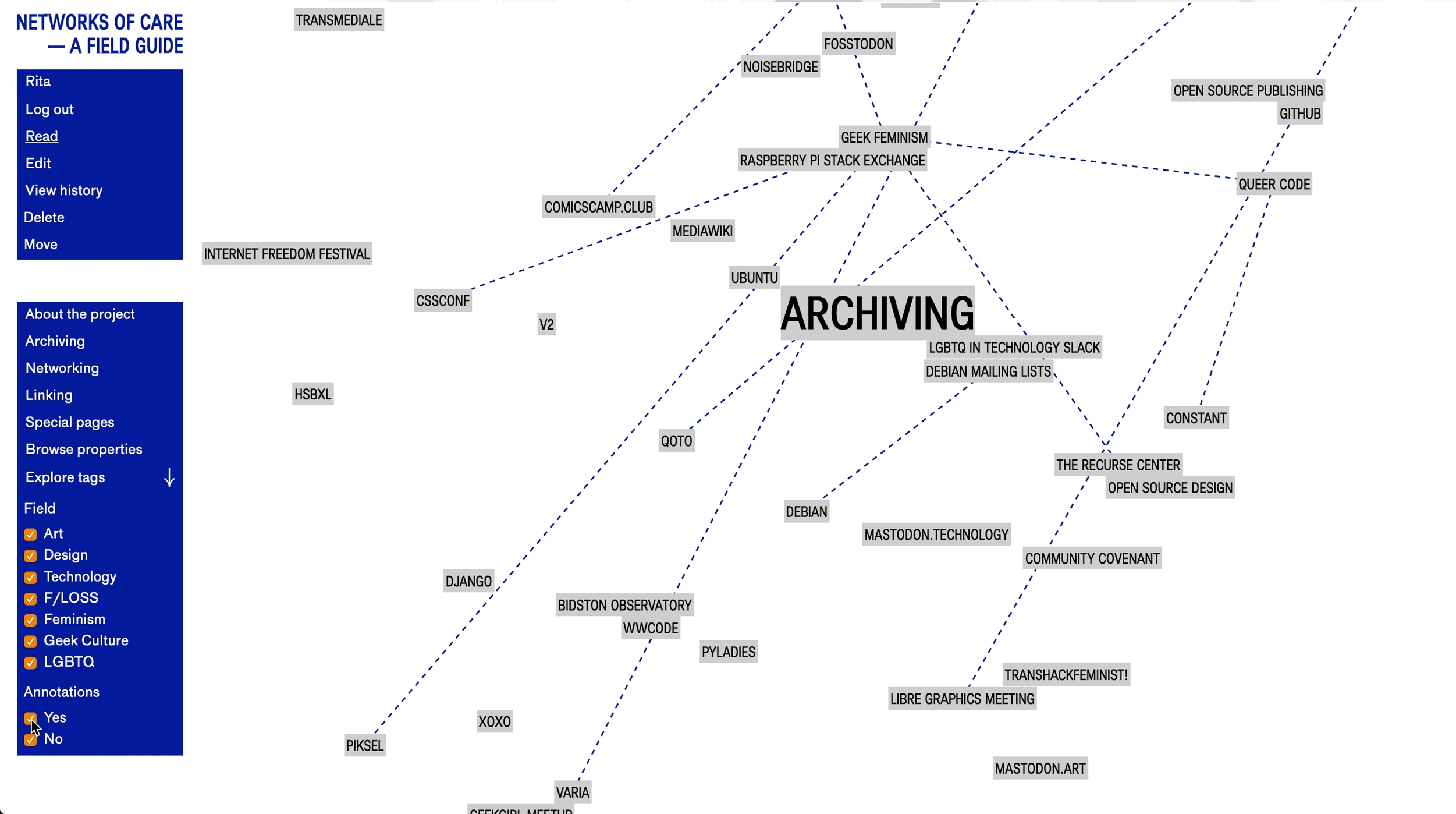Category:Archiving
For Archiving, the wiki software became particularly useful. I'm taking advantage of extensions, such as Semantic Mediawiki, to annotate the documents with specific properties. In the process of reading and interpreting the guidelines, I noticed some patterns. It is palpable how writing Codes of Conduct usually means borrowing content from other groups, looking for inspiration elsewhere, and being aware of the concerns of different communities. I, mostly, recognised these sections:
- Intentions — This section sets the goals for the Code of Conducts, manages expectations for the document.
- Expected behaviour — Describes the actions welcomed in the community.
- Unacceptable behaviour — Expresses the behaviours not tolerated in the community. Ignoring these guidelines may result in action from the community.
- Behaviour to avoid — Lists the actions users should refrain to do, attitudes that weaken the community. It focuses on behaviours some people may think are acceptable.
- Enforcement — Explains the consequences for the users who break the Code of Conducts. It also clarifies how reports should be done and how the community will act upon the information given. It sets responsibilities when incidents happen.
- Support — Holds contacts of the people who are responsible for the Code of Conducts. They may respond to reports, inform the community of changes in the documents, be moderators.
- Links — Other links for support, further explanation of some topics, it points to related content elsewhere.
I'm annotating and selecting the texts that fit into these sections. Clicking on the links above will show you an overview of all the content annotated. For example, you can see all the Intentions together, wrote by each community.
After collecting and analysing more documents, I started noticing more patterns. This is a list that keeps growing...
- Mission — Here the group takes time to explain their background, values, members. Different from Intentions, because it is not related to the Code of Conduct, but with the community as a whole.
- Scope — Indicates where the Code is used, if only on mailing lists, if includes IRC channels, offline meetings, etc.
- Feedback — Explains the mutability of the living document, opens for contributions, includes versions and alterations.
For the reader, it was important to make the structure visible and the content within the structure. To do so, I emphasized the annotations using colours.
An example of an annotated page is Queer_Code.
You can filter the pages with annotations in the main page, exploring the tags menu.
The act of sharing templates and knowledge might be useful, but it's in the diversity of values, rules, practices of management, enforcement and support that one can find the reasoning for all this labour of care.
This category uses the form Archiving.
Pages in category "Archiving"
The following 58 pages are in this category, out of 58 total.


